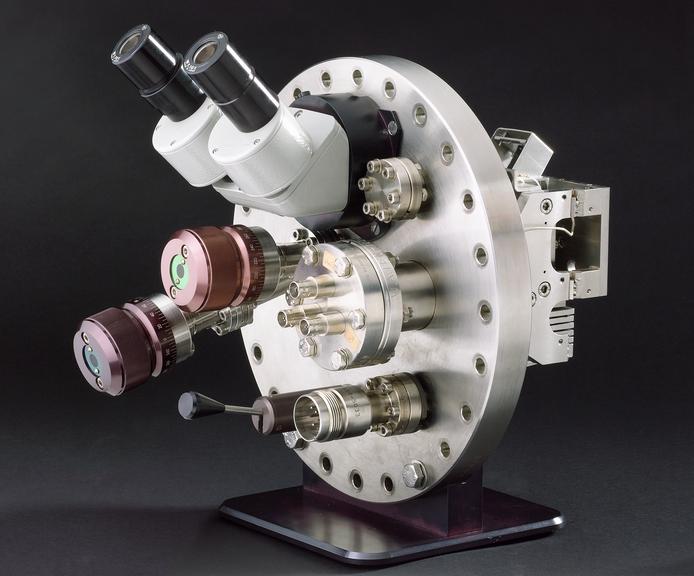

Scanning Tunnelling Microscope, Cambridge, England, 1986
- maker:
- W A Technology Limited






Scanning Tunnelling Microscope made by W.A. Technology Ltd., Cambridge, England, 1986. This is the first STM to be produced commercially.
Scanning Tunnelling Microscopes (STMs) were first developed in 1986. STMs allowed scientists to see individual atoms for the first time. STMs work when electrons ‘jump’ between the microscope and what is being examined. Unfortunately, microscopes that use electrons can damage what is being investigated. STM technology was developed by Gerd Binnig (b. 1947) and Heinrich Rohrer (b. 1933). They won the Nobel Prize for Physics in 1986. Made by W A Technology Ltd in Cambridge, England, this model was the first commercially produced Scanning Tunnelling Microscope.
Details
- Category:
- Microscopes
- Object Number:
- 1989-576
- Materials:
- metal (unknown), brass (copper, zinc alloy), glass, plastic (unidentified), paint, electronic components and possibly ceramic
- Measurements:
-
overall: 300 mm x 320 mm x 260 mm,
- credit:
- W A Technology Limited




